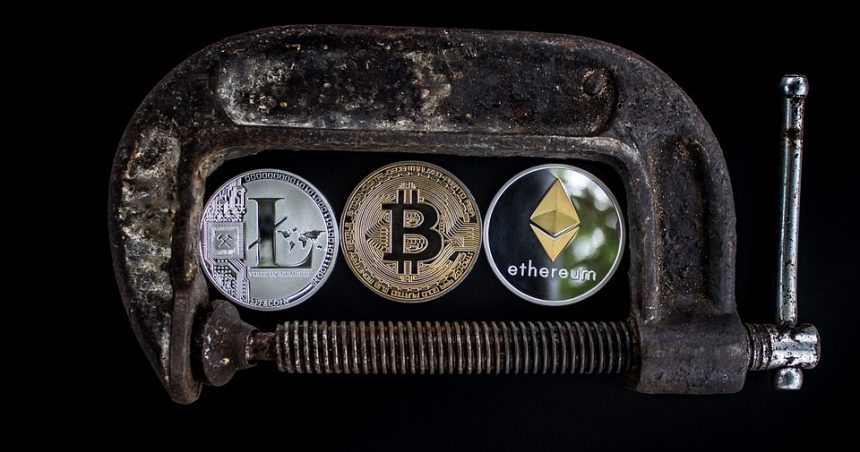In recent years, the cryptocurrency landscape has evolved from the singular fascination of Bitcoin to a sprawling ecosystem rich with diversity, thanks primarily to altcoins. Altcoins, which encompass any digital currency that is not Bitcoin, have proliferated, leading to innovations in blockchain technology, decentralized finance (DeFi), non-fungible tokens (NFTs), and more. However, as the altcoin space continues to mature, it faces the dual challenges of fostering innovation while navigating an increasingly complex regulatory landscape. This delicate balance has significant implications for developers, investors, and users alike.
The Explosion of Altcoins
The rise of altcoins can be traced to the limitations perceived in Bitcoin, particularly regarding transaction speed, scalability, and functionality. Coins like Ethereum introduced smart contracts, allowing developers to create decentralized applications (dApps) and revolutionizing industries such as finance, art, and supply chain. Other projects, including Ripple, Cardano, and Solana, have aimed to address specific use cases ranging from cross-border payments to high-speed transactions.
As enthusiasm for altcoins surged, so did the amount of capital entering this space. Innovative projects scaled rapidly, often leveraging Initial Coin Offerings (ICOs) and other fundraising mechanisms that circumvented traditional venture capital routes. However, this growth has drawn the scrutiny of regulators worldwide, raising concerns about consumer protection, market integrity, and financial stability.
The Regulatory Landscape
The regulatory response to altcoins varies significantly by jurisdiction. In the United States, for instance, the SEC (Securities and Exchange Commission) has taken a firm stance on classifying many altcoins as securities. This classification subjects them to stringent regulations designed for traditional financial securities, which can be cumbersome for innovative projects aiming to maintain flexibility. Other countries have been more lenient or have adopted a wait-and-see approach, fostering a more conducive environment for innovation.
Nonetheless, the lack of a standardized global regulatory framework creates uncertainty. Developers may hesitate to launch projects without clear guidance, and investors may find themselves under-protected in an environment rife with scams and phishing attempts. The Securities and Exchange Commission has initiated numerous enforcement actions against fraudulent ICOs and those that promote unregistered securities, but the same regulatory body has also hinted at the potential for clearer regulatory guidelines.
Balancing Innovation and Compliance
To thrive in the altcoin space, stakeholders must navigate a precarious regulatory tightrope that balances the need for innovation with the requirements of compliance.
1. Educating Stakeholders
One of the first steps toward achieving this balance is education. Developers, investors, and users should understand the regulatory obligations relevant to their activities. Understanding how securities laws apply to token sales, for instance, can help projects avoid legal pitfalls and build trust within the community. Workshops, webinars, and community outreach programs led by legal experts can equip stakeholders with the necessary knowledge to make informed decisions.
2. Adaptive Regulatory Frameworks
Regulators, for their part, must adopt adaptive frameworks that encourage innovation while safeguarding consumer interests. Some jurisdictions have begun to experiment with regulatory sandboxes—environments where new products and services can be trialed with less stringent rules. This approach not only allows regulators to observe emerging technologies but also gives startups the flexibility to innovate without the fear of immediate repercussions.
3. Decentralized Compliance Solutions
As an alternative approach, the altcoin industry can explore decentralized compliance solutions, leveraging blockchain technology to create transparent and verifiable systems that align with regulatory requirements. Projects focusing on identity verification, transaction monitoring, and anti-money laundering (AML) procedures can empower users while satisfying the prerequisites of regulators.
4. Collaboration and Dialogue
Collaboration between private-sector innovators and public-sector regulators is key to finding balance. Through dialogue and partnerships, both parties can work together to establish guidelines that protect investors while promoting growth. By soliciting input from industry stakeholders during the regulatory rule-making process, authorities can ensure that new regulations are both practical and effective.
Conclusion
As the altcoin space continues to expand, the need for a balanced approach between fostering innovation and ensuring compliance becomes increasingly critical. With the right education, adaptive frameworks, decentralized solutions, and collaborative efforts, the industry can create a sustainable environment that encourages technological innovation while protecting consumers and maintaining market integrity. The future of altcoins lies not just in their technological capabilities but also in their ability to navigate the regulatory landscape responsibly and creatively. In doing so, stakeholders can harness the transformative potential of blockchain technology while ensuring a safe and prosperous market for all.





